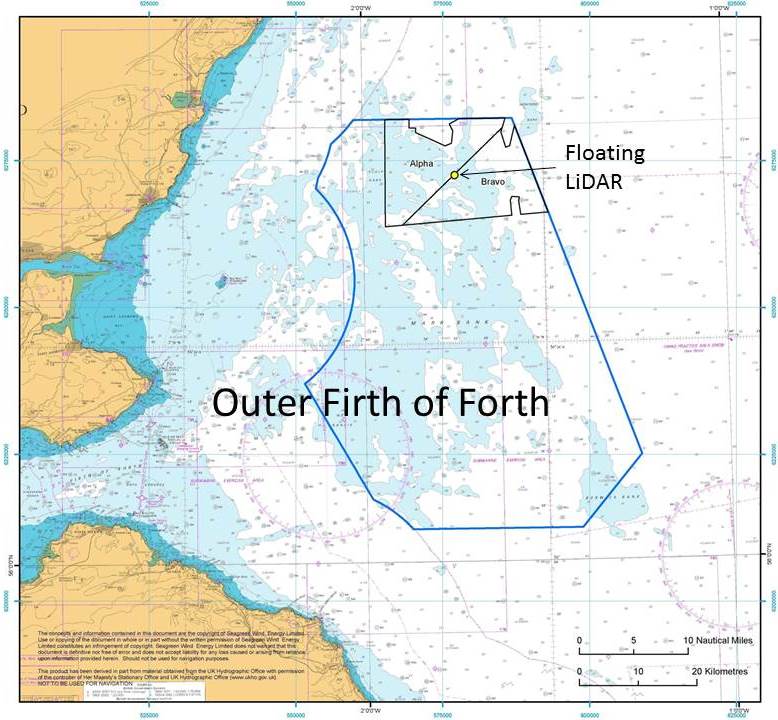LiDAR buoy measures “Firth of Forth” Wind Farm Area
LiDAR buoy Firth of Forth
Fraunhofer IWES has been measuring wind conditions in the “Firth of Forth” wind farm area off the east coast of Scotland with its LiDAR wind buoy for a number of weeks now. The project from Seagreen Wind Energy Ltd encompasses a 12 to 24 month measuring campaign during which the LiDAR buoy will measure wind speeds at different heights of up to 650 feet using laser remote sensing. The preparations and installation of the buoy went without a hitch, allowing Fraunhofer to start the measurements at the site 15 miles off the coast just one month after awarding of the contract.
Thanks to the high precision and the robust and redundant design of the buoy, the data are particularly suitable for the compilation of energy yield assessments and the specification of environmental parameters for the planning of offshore wind farms. A special correction algorithm eliminates the movements of the buoy itself from the measurements and allows measuring precision comparable to that obtained in offshore fixed met mast measurements.
‘Meteorological data is critical to the successful design of a wind farm and the data provided by a floating LiDAR is cost effective, reliable and flexible, in that the buoy can be moved to different locations if required at minimum cost’ , said Mike Scott, General Manager of Seagreen Wind Energy Limited.
The buoy was awarded “pre-commercial status” at the end of 2016 in an independent review performed as part of the Offshore Wind Accelerator (OWA) program run by Carbon Trust. The result was the fruit of a six-month validation campaign alongside the Fino1 wind measuring mast in the North Sea.
´There is a great deal of interest in the wind industry for wind measurements with our buoy because it allows enormous time and cost savings compared with measurement masts – but offers the same accuracy. I expect that we will be employing further buoys in the future´, said Head of Division Dr. Bernhard Lange of Fraunhofer IWES.
Last modified:
